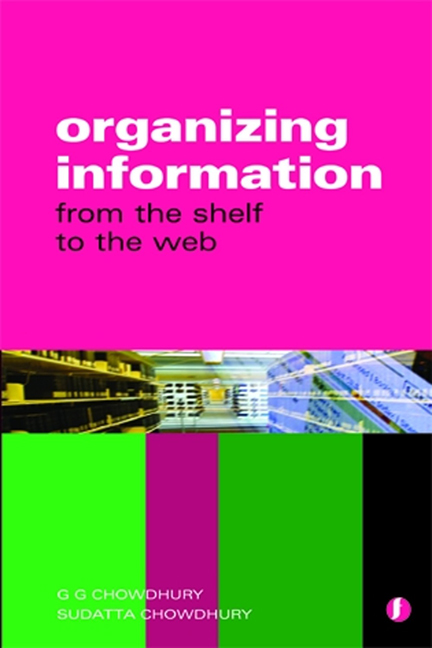Book contents
- Frontmatter
- Dedication
- Contents
- Preface
- Glossary
- 1 Organizing information: what it means
- 2 Information organization in non-library environments
- 3 Cataloguing
- 4 Bibliographic formats: MARC 21 and others
- 5 Library classification
- 6 Subject heading lists and thesauri in information organization
- 7 Organization of internet information resources
- 8 Metadata
- 9 Markup languages
- 10 Ontology
- 11 Information architecture
- 12 The semantic web
- 13 Information organization: issues and trends
- Index
3 - Cataloguing
Published online by Cambridge University Press: 10 September 2022
- Frontmatter
- Dedication
- Contents
- Preface
- Glossary
- 1 Organizing information: what it means
- 2 Information organization in non-library environments
- 3 Cataloguing
- 4 Bibliographic formats: MARC 21 and others
- 5 Library classification
- 6 Subject heading lists and thesauri in information organization
- 7 Organization of internet information resources
- 8 Metadata
- 9 Markup languages
- 10 Ontology
- 11 Information architecture
- 12 The semantic web
- 13 Information organization: issues and trends
- Index
Summary
Introduction
Cataloguing is one of the oldest information organization activities and has a history that is over 2000 years old. However, the history of modern-day approaches to cataloguing by using standard principles and practices is only a few hundred years old, and the most recent developments took place only over the past few decades. Modern day cataloguing activities are controlled by standard tools and guidelines, and virtually de facto standards like the Anglo-American Cataloguing Rules (AACR2 for short, referring to the second edition) exist; these need to be followed closely when preparing the entries for a catalogue of information resources, not only to make it easy to use, but to ensure that the entries are designed in a standard way, thus making it possible to share and exchange cataloguing data among various institutions. The basic concept of a library catalogue, and the various tools and techniques used in the cataloguing of bibliographic resources, are discussed in this chapter, and the process of cataloguing according to AACR2 is outlined. The implications of certain AACR2 guidelines on today's OPACs are also explored, as are the issues and techniques of cataloguing internet resources. The chapter also provides a brief description of the characteristics of the FRBR model.
A brief history of library catalogues
Researchers have found evidence of some form of cataloguing of the records held in the library of Alexandria in ancient Egypt around 300 BC (Hanson and Daily, 1970). However, as far as modern cataloguing and its objectives and principles are concerned, history goes back just over two centuries. The first catalogue code at the national level was the French Code of 1791 (Hunter and Bakewell, 1991). In Britain, cataloguing rules were developed by Sir Anthony Panizzi for the British Museum library during the first half of the 19th century, and they were published in 1841 (Blake, 2002). However, it was Cutter who first specified the objectives of a library catalogue or a bibliographic system in 1876 (Cutter, 1904). These objectives were subsequently modified by Lubetzky; they were accepted internationally at a conference on cataloguing principles held in Paris in 1961, and are thus known as the ICCP Paris Principles.
- Type
- Chapter
- Information
- Organizing InformationFrom the Shelf to the Web, pp. 29 - 46Publisher: FacetPrint publication year: 2013



